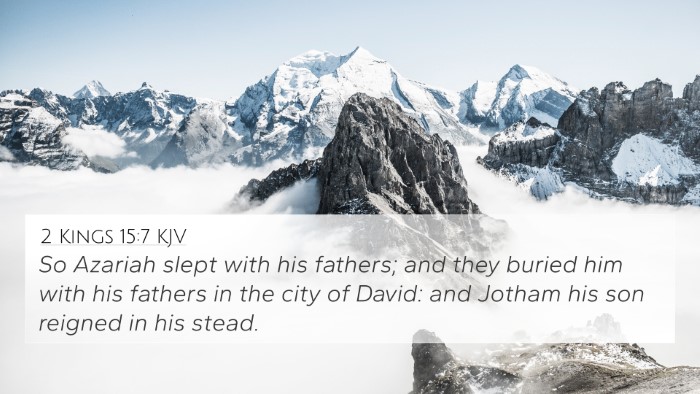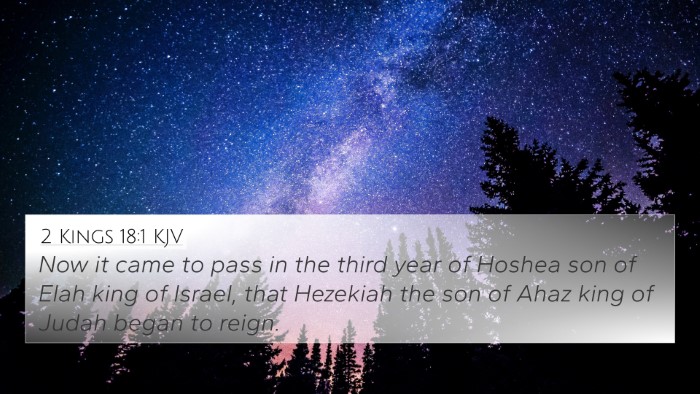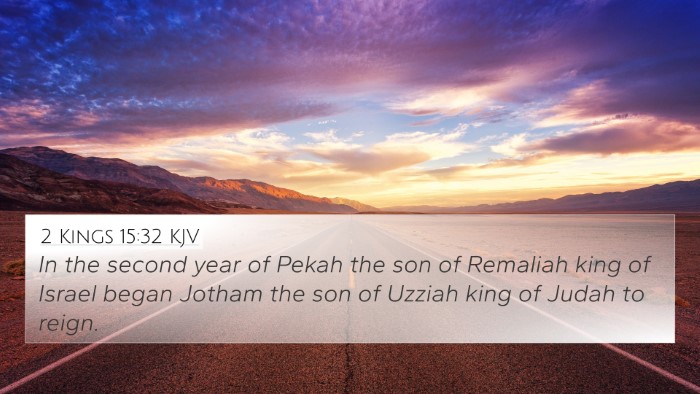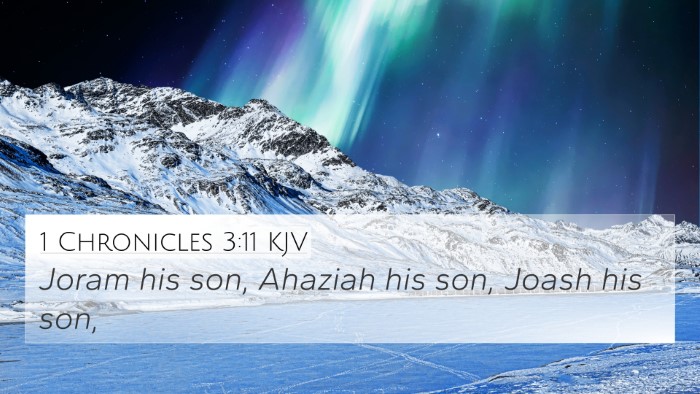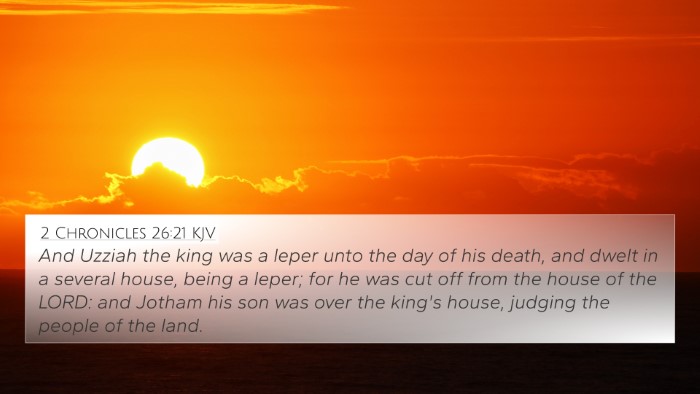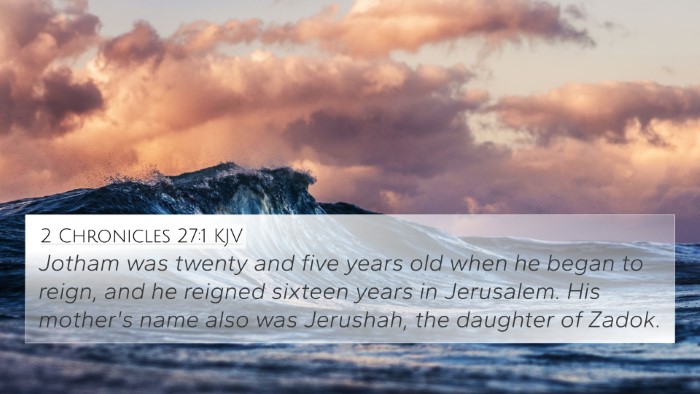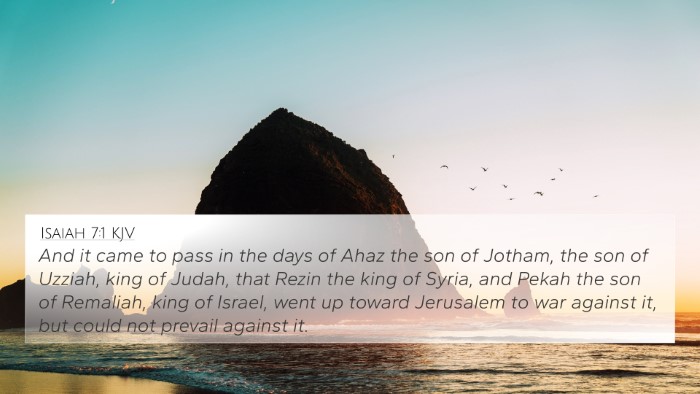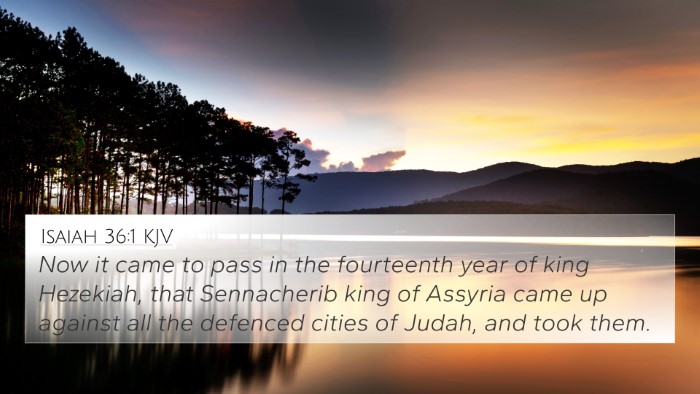Bible Verse Meaning: Matthew 1:9
Context and Overview
Matthew 1:9 states, "And Uzziah begot Jotham; and Jotham begot Ahaz; and Ahaz begot Hezekiah." This verse is part of the genealogy of Jesus Christ, which outlines the lineage through which Jesus emerged, demonstrating His fulfillment of Old Testament prophecies. The significance of this lineage reflects God's covenant with His people and the unfolding of redemptive history.
Interpretation of Matthew 1:9
Genealogical Significance
This verse is a crucial part of the genealogy that establishes Jesus' royal lineage. Within the Jewish tradition, genealogy was important as it affirmed identity, status, and God's promises. Understanding the connections in Matthew 1:9 allows us to see the fulfillment of the Davidic line, leading us to Jesus, who is recognized as the King of Kings.
Lessons from the Lineage
The mention of Uzziah, Jotham, Ahaz, and Hezekiah highlights a range of reigns characterized by varying faithfulness to God. Matthew Henry notes that despite the shortcomings of King Ahaz, God’s promise to David still prevails through the faithful lineage leading to Jesus (Matthew Henry's Commentary). This reflects a continuous thread of grace running through the history of Israel, emphasizing God's faithfulness even amidst unfaithfulness.
Theological Reflections
Albert Barnes points out that the genealogy listed in Matthew is not merely a historical recounting but serves a theological purpose by connecting Jesus to key figures in Israel's history. The varied kings illustrate the failures and triumphs of Israel, thus positioning Jesus as the ultimate fulfillment of God's redemptive plan (Barnes' Notes). Matthew focuses on a perspective where Jesus' birth is seen as the culmination of a long-awaited promise.
- Uzziah: A king who reigned with strength but fell due to pride; illustrates the dangers of hubris.
- Jotham: Known for building the upper gate of the temple; he represents a more faithful king.
- Ahaz: A king who turned to foreign alliances rather than trusting God; demonstrates disobedience.
- Hezekiah: Known for reforms and returning the people to worship; signifies restoration.
Cross-References Related to Matthew 1:9
The following verses establish connections with Matthew 1:9, enhancing our understanding of its significance:
- 2 Samuel 7:12-16 - God’s covenant with David promising an everlasting kingdom.
- Isaiah 9:6-7 - A prophetic reference to Jesus as the coming Messiah and King.
- Jeremiah 23:5-6 - Prophecy about the righteous Branch from David's lineage.
- Luke 3:23-38 - The genealogical account in Luke, showing a different but connected line of ancestry.
- Psalm 89:3-4 - God’s promise of a lasting dynasty through David.
- Matthew 22:41-46 - A reference where Jesus questions the Pharisees regarding David's son.
- Revelation 22:16 - Jesus as the Root and Offspring of David, emphasizing His rightful claim as king.
Understanding the Thematic Connections
Within the Bible, Matthew 1:9 serves as a vital thematic link in understanding the history of salvation. The themes found in the genealogies represent God's plan working through human history, showcasing both divine sovereignty and human agency.
Tools for Bible Cross-Referencing
To enhance one’s study of cross-references in connection with Matthew 1:9, various tools can be utilized:
- Bible Concordance: Helps in finding relevant verses based on keywords.
- Bible Cross-Reference Guide: Provides systematic connections between verses.
- Digital Bible Software: Many tools can assist in generating cross-references automatically.
- Bible Study Apps: Specific apps help users find thematic connections and cross-references quickly.
- Comparative Study Books: Resources that delve into various biblical themes and their interrelations.
Conclusion
Matthew 1:9 encapsulates crucial historical and theological elements that are key to the Christian faith. By examining this verse through the lens of public domain commentaries, we gain greater insight into its implications for understanding the genealogy of Jesus Christ as the ultimate fulfillment of the Old Testament promises. The connections formed through cross-referencing various Bible verses enrich our comprehension of scripture and foster a deeper appreciation of the divine narrative woven throughout the Bible.
In studying this passage and its connections, we ascertain how the tapestry of biblical texts forms a unified account of God's redemptive history, illuminating the transformative nature of His covenant with humanity.



